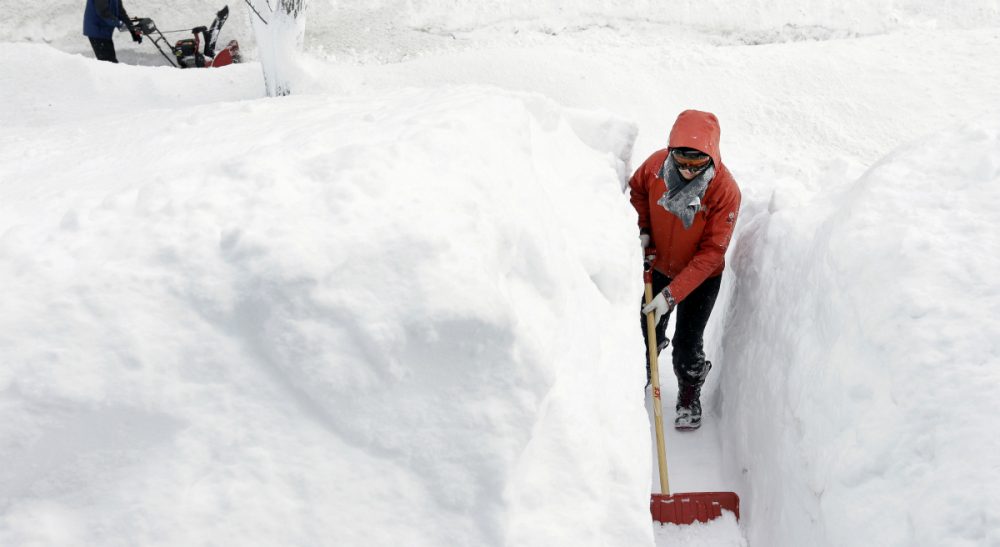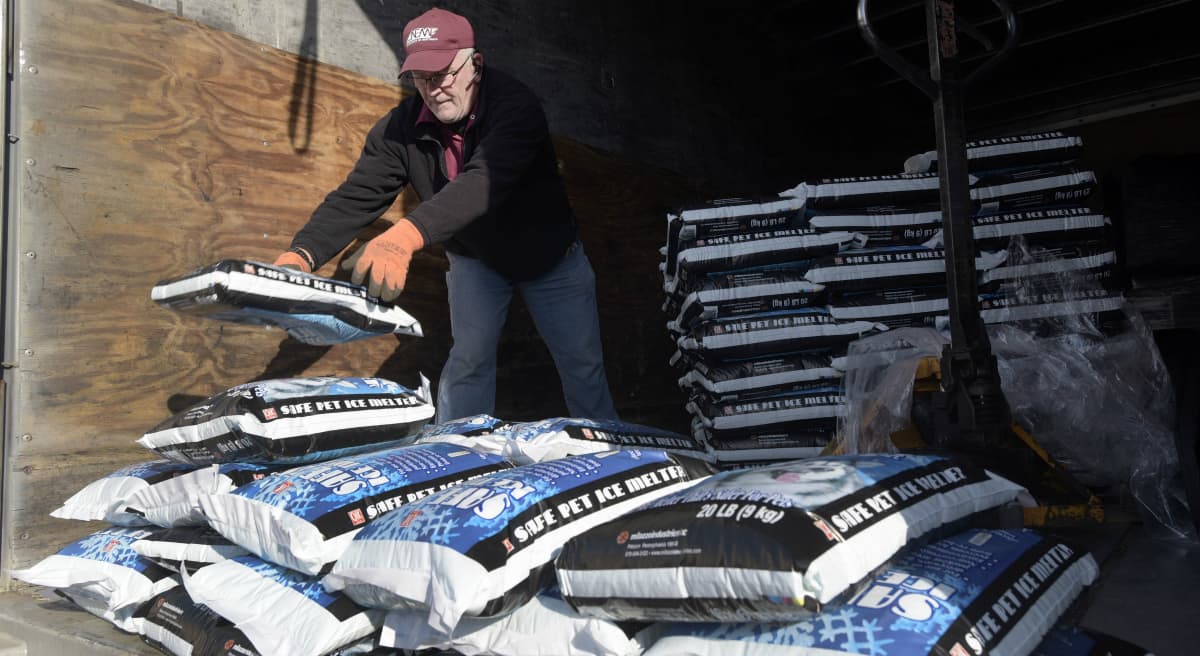Advertisement
Blizzard PTSD: As Snow Looms, Why Are We Reduced To Battered, Trembling Wrecks?

My workout on the cross-trainer was incredibly productive on Thursday. I took more steps, overcame greater resistance, got my heart rate up higher, and burned more calories than usual. And I owe it all to toggling between CNN and The Weather Channel.
Anxiety may yet do wonders for my health.
The CNN screen was exceptionally frantic, with downward pointing red arrows, signaling the stock market’s ongoing plummet. The cause lies not just with slumping oil prices and sluggish growth in China’s economy, but with “investor uncertainty.” Apparently not knowing whether or not the earth may be hit by a comet the size of Donald Trump’s ego is worse than being able to confidently predict it and act accordingly.
Meanwhile, over on The Weather Channel, heat maps showed rain, snow, locust and frogs moving steadily eastward in a relentless amoeba-like blob of neon red, yellow and green. There was a chance that we’ll get clobbered by two feet of snow over the weekend. There was also a chance that we wouldn’t; it was simply too soon for meteorologists to provide the probabilities of either scenario.
Until 2015, I and most New Englanders experienced blizzards as largely positive events.
Normally a statement this equivocal wouldn’t arouse much of a response. If I said, “Maybe I’ll find a lost wallet on the Red Line … or maybe I won’t” — you’d look at me with indifference at best, and more likely with perplexed scorn. But in this case of the weather, mathematical uncertainty hasn’t prevented me and everyone I know from obsessing over the mere possibility of a blizzard.
Because let’s face it. Last winter left even the heartiest, most snow-loving among us battered, trembling wrecks. It wasn’t the individual snowstorms that led us to feel beaten down, stir crazy, overwhelmed or apocalyptic. It was the grueling series of them. Our despair mounted in direct proportion to the ever-increasing height of the snowbanks.

Until 2015, I and most New Englanders experienced blizzards as largely positive events. For fit and well-equipped city dwellers, a snowstorm was an invigorating adventure, a chance to cross-country ski down temporarily impassable streets. For some working parents, it was a welcome break from the daily grind and a chance to sled, bond and bake with their school-free kids in the middle of a weekday. And for those of us who consider shoveling an impressive form of aerobic exercise, a good snowstorm let us clear the sidewalk or dig out the car, then loll about for the rest of the day watching Netflix series and bubbling soup. But the constant, relentless piling on of last winter’s snow changed all of that. Instead of being an anomaly, it instead enforced a new, grinding, hassle-filled way of life.
And now we’re manifesting the consequences through hypervigilance, defined as “an enhanced state of sensory sensitivity accompanied by an exaggerated intensity of behaviors whose purpose is to detect threats. Hypervigilance is also accompanied by a state of increased anxiety which can cause exhaustion.”
Advertisement
We’re exhausted not by the weather, but merely by the weather forecast.
And in our fretting, in our utterly useless speculation (because as Mark Twain and/or his friend Charles Dudley Warner so wisely noted, “Everyone talks about the weather but nobody does anything about it”), our most illogical tendencies flare into prominence. We manifest many of the principles of behavioral economics.
For instance, the “availability heuristic” suggests that people make judgments about the likelihood of an event based on how easily an example of it comes to mind. Last winter’s siege is still so fresh and frozen in our memories that with just the second imminent snow of the season, we anticipate another one like it.
It wasn’t the individual snowstorms that led us to feel beaten down, stir crazy, overwhelmed, or apocalyptic. It was the grueling series of them.
Then there’s the certainty/possibility effect, in which people over-weight small probabilities based on whether their effect is binary or linear. Let me translate. If our likelihood of winning a prize moves from 50 percent to 60 percent, we are less excited than if it moves from 95 percent to 100 percent, as in the latter case, the certainty of the outcome emotionally outweighs the fact that our chances have increased by a smaller increment. By the same token, a change from a zero percent chance to a 5 percent possibility of winning a prize is more attractive than a change from 5 percent to 10 percent. That undoubtedly helps to explain the frenzy of Powerball purchasing we just witnessed. But it may also account for the fact that in our bruised, hypervigilant state, we seem to be more aroused by the prospect of any snow than we are by the amount.
So how can we manage this understandable but debilitating weather anxiety? Perhaps it’s time to apply another principle of behavioral economics — the Decoy Effect. As consumers, we often base our choices not on absolute preference, but in relation to one another. Our liking for one option over another changes as a result of adding a third option that’s similar, but less attractive. For example, in a 2008 study researchers found that people are more likely to choose an elegant pen over $6 in cash when they were presented with a third option in the form of a less fancy pen.
So maybe in the spirit of “it could be worse,” we should start trying to embrace the prospect of four inches of snow over the dream of none. After all, four is much better than 10.
Of that I’m certain.
